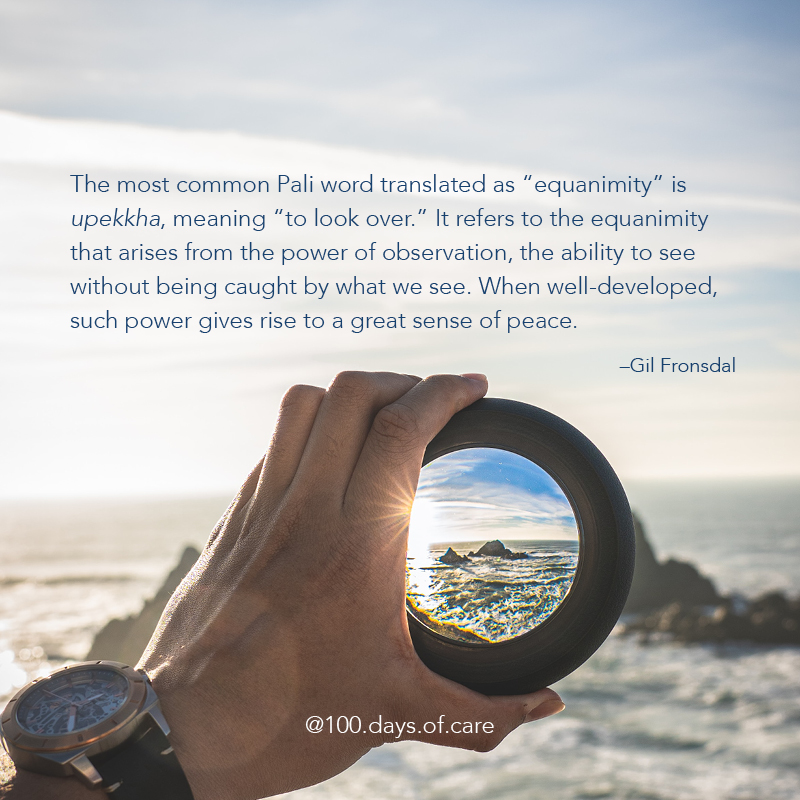From the article Equanimity, adapted from a talk by Gil Fronsdal, May 29th, 2004:
The English word “equanimity” translates two separate Pali words used by the Buddha. Each represents a different aspect of equanimity.
The most common Pali word translated as “equanimity” is upekkha, meaning “to look over.” It refers to the equanimity that arises from the power of observation, the ability to see without being caught by what we see. When well-developed, such power gives rise to a great sense of peace.
Upekkha can also refer to the ease that comes from seeing a bigger picture. Colloquially, in India the word was sometimes used to mean “to see with patience.” We might understand this as “seeing with understanding.” For example, when we know not to take offensive words personally, we are less likely to react to what was said. Instead, we remain at ease or equanimous. This form of equanimity is sometimes compared to grandmotherly love. The grandmother clearly loves her grandchildren but, thanks to her experience with her own children, is less likely to be caught up in the drama of her grandchildren’s lives.
The second word often translated as equanimity is tatramajjhattata, a compound made of simple Pali words. Tatra, meaning “there,” sometimes refers to “all these things.” Majjha means “middle,” and tata means “to stand or to pose.” Put together, the word becomes “to stand in the middle of all this.” As a form of equanimity, “being in the middle” refers to balance, to remaining centered in the middle of whatever is happening. This balance comes from inner strength or stability. The strong presence of inner calm, well-being, confidence, vitality, or integrity can keep us upright, like a ballast keeps a ship upright in strong winds. As inner strength develops, equanimity follows.
Source: https://www.insightmeditationcenter.org/books-articles/equanimity/

